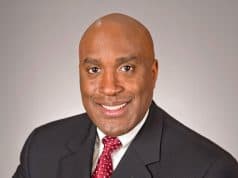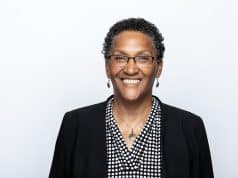Consolidation in Healthcare was the theme of the 12th Annual Goizueta Healthcare Association and Case Competition, which took place February 9-10. Shobhika Somani 12MBA, senior manager at ECG Management Consultants, moderated the Feb. 9 forum at the Rollins School of Public Health, which featured five expert panelists discussing not only healthcare consolidation, but future challenges and even the appropriate level of government intervention in the health of its population.
At the Feb. 10 Case Competition, the Goizueta team finished second out of 11 teams.
An excerpt (edited for clarity) from the forum follows:
Somani: Since the passage of the Affordable Care Act we have seen a frenzy of consolidation. How is this consolidation changing the healthcare industry?
Chip Clark, transaction advisory service partner, EY: There is tremendous pressure to reduce healthcare costs, so at EY we talk about two types of transactions. “Scale”-type transactions are financially motivated. For instance, we can integrate and consolidate back office functions in the hospital space; we can take costs out of the system “Convergence” transactions are not just a hospital acquiring another hospital–maybe it’s a payer trying to acquire a provider. Many of those are aimed at improving quality.
Jay Janco, head of contracts and pricing, UCB: We are seeing a lot of consolidation in the payer market. Information technology can provide a competitive advantage. The payers who are able to leverage data and determine what provides the best outcomes have an edge.
Brian Walsh, entrepreneur in residence, Coulter Translational Program: In the device industry, there has been a fundamental shift in the customer. Historically, it was the physician. Now, the physician is more of an adviser. Today, we frequently deal with purchasing agents. There was a time when a physician could go to bat for you and your product. Those days are long gone.
Somani: What are the challenges with a consolidating marketplace?
Grant Lynde 15WeMBA, associate professor of anesthesiology, Emory School of Medicine: There are no anesthesiologists in the Atlanta market who are not part of a large group. Profits are not made out of efficiency. It’s these large groups are telling new graduates, “we are paying you 20 percent below what you otherwise could have earned.”
Shelley Sweazey, director of market strategy, Kaiser Permanente: We are seeing integration across groups whose missions aren’t aligned. You have for-profit health plans that are driven by cost efficiency vs. physician groups who are driven by providing the best care to patients. That is the extreme, but it happens
Somani: Anthem and Cigna tried to merge and it was blocked. Was that the right decision?
Sweazey: There are not too many large players and they already have a lot of leverage to negotiate rates. What the DOJ is saying is that it’s better for consumers to have more competition in the market.
Walsh: Looking at this from the employer side, every recent year, the cost of health insurance has risen between 9 and 22 percent. You want to lower costs, but you also want equitable coverage. It forced us where, about every other year, we try to renegotiate our contracts, so more competition was better.
Somani: Regardless of whether the ACA goes away, there is going to be a lot of demand in terms of healthcare. What types of things you as bigger challenges we need to be focusing on to provide effective care?
Lynde: I’m an obstetric anesthesiologist and I sit on the Georgia Maternal Mortality Review Commission. We review the medical records of women who die while pregnant or die within one year of childbirth. Perhaps as many as 50 percent of these patients—women of child-bearing age—who die in the state of Georgia, it’s due to issues of mental health, prescription or illegal drug use, or some preventable socioeconomic condition. So if you are on the side of the political aisle that says the government has no responsibility, we’re not going to fix these problems–well, what’s the cost to society when you have a dead mom? Until we as a country are able to acknowledge these societal ills, we’ll be unable to tackle some of these bigger issues.
Clark: Moving more of the care into the home. Does that help on the clinical side? It seems like a natural solution, but there are concerns about fraud and compliance.
Lynde: There are some studies out there where if you take elderly diabetic patients and you pay someone to go to their home to trim their toenails, you decrease the patient’s amputation risk. Not only do you improve the quality of life, but some of these patients are just lonely. Having someone come in and just say “hi” improves their mental health and even increases medication compliance.












